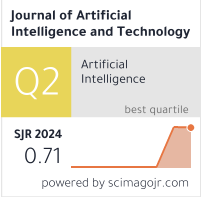Indoor Positioning System Based on UWB Rapid Integration with Unity Cross-Platform Development Engine Through IoT
DOI:
https://doi.org/10.37965/jait.2023.0365Keywords:
IM, IR 4.0, Unity 3D, UWB, wirelessAbstract
The changes in time have made divergences of endless possibilities in localization technology. Localization in an indoor environment is surely a concerning matter as several shortcomings always arise when dealing with indoor localization. To optimize localization in an indoor environment, tracking a subject’s position in real time is a certainly vital interest. Challenges in obtaining an accurate position in precise millimeter accuracy while the subject perceives visual information rendered in real time are somewhat always a matter in hand to address in an indoor environment. The main objective of this research is to implement a positioning method in an indoor environment based on ultra-wideband (UWB) technology to obtain position accuracy in millimeters by rapidly integrating with Unity three-dimensional (3D) engine, hence obtaining a detailed inertial measurement unit (IMU) data via wireless Message Queuing Telemetry Transport (MQTT) network protocol. The key results of this research should ensure the establishment of an indoor positioning system based on providing the finest selection of positioning and UWB parameters. These fine selections are an important design choice impacting the system’s performance in obtaining an accurate position within the range of 0.15 mm to 115 mm. The technological benefits involve the innovation of wireless communication based on the internet of things (IoT) concept relevant to the Industrial Revolution 4.0 (IR 4.0), enabling participants to move freely in an indoor environment while obtaining accurate and precise positioning coordinates. Future recommendations comprise a real-time 2D Pozyx Creator Controller integrated with Unity 3D user graphical user interface (GUI) purposes intended for mobile mapping navigations.
Published
How to Cite
Issue
Section
License
Copyright (c) 2023 Authors

This work is licensed under a Creative Commons Attribution 4.0 International License.





